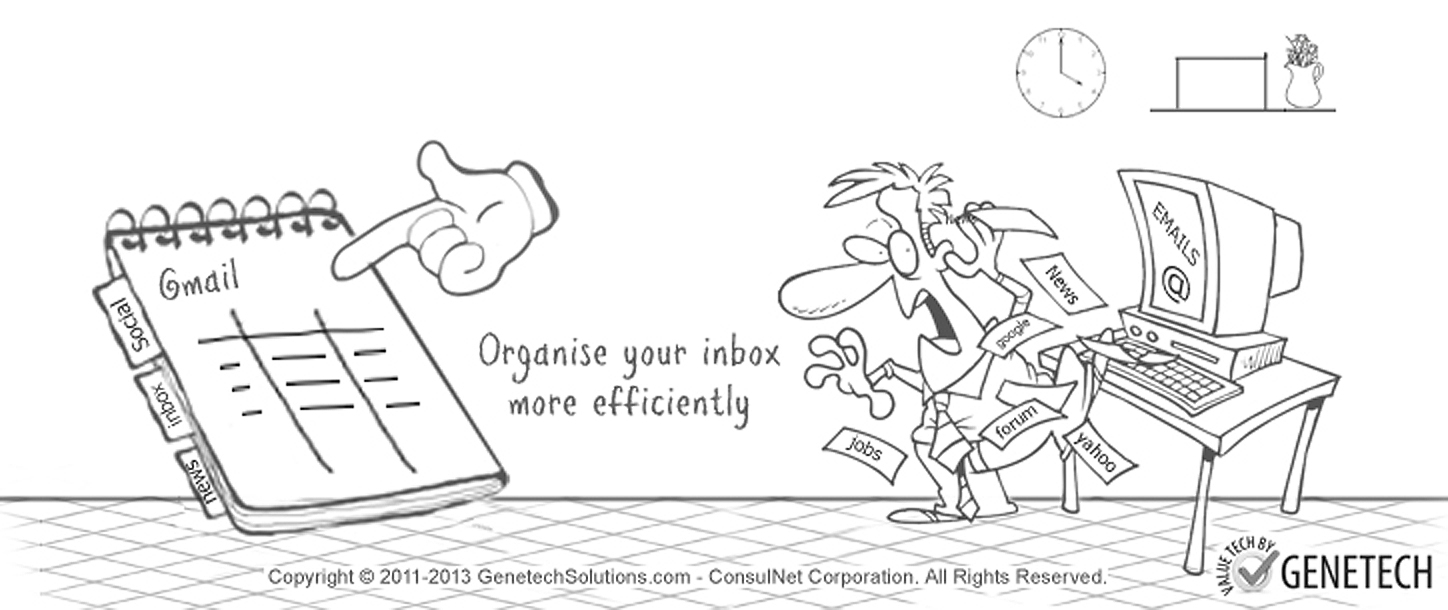
At one time or another, we’ve all felt the dread of going through our email inbox, sorting out what’s urgent, what can wait and what needs to immediately deleted. Email was made to streamline communication so that we can spend more time on work. Instead, it’s become a drag on a modern worker’s efficiency, eating up as much as a third of their day. The reality is that most of the email that you get isn’t important or urgent. Luckily, there are a number of rather simple tasks you can take that should help you get rid of the bulk of unimportant emails you get.
The best way to start would be to unsubscribe from social media site notifications. You’ll get those notifications when you go onto the site, and those emails could easily turn into bigger distractions – those emails are just trying you to get you to visit the site, after all. An email from Facebook about a comment could see you spending the next 20 minutes surfing Facebook. A classic example of a person meaning to be productive lead astray.
So you’ve unsubscribed from social media notifications, but what about the newsletters, coupon deals and everything else that you’ve also subscribed for over the years? These are called bacn. It’s a technical term pronounced bacon – better than spam, but not as good as a personal email. Most of these email are left unopened, even though you actually signed up for it. In the end, they just clutter up your inbox. Unsubscribe from all of these, unless you really do read those emails. Make sure you’re strict about what you do and don’t unsubscribe from, though. Keep in mind that this is all for the sake of productivity.
Now that we’ve unsubscribed from those annoying, computer-sent emails, what about annoying, people-sent emails? Like those annoying forwarded emails – the type that starts with “Fwd: Fw: FWD”? Well, those are exactly the type of emails that a basic filter can help get rid of. Simply make a few filters on your email client that checks for those beginning words, and have it delete those emails automatically. Alternatively, you could have them redirected to a different folder that you check perhaps once or twice a week, in case one of the forwards is actually important.
By now, you’ve hopefully cut down on quite a lot inbox bloatage. You can still reduce it though. However, you have to change how you write emails a little bit. Try and write your emails in a way that keeps it from spawning more email. Let’s look at a hypothetical situation. Let’s say that you want to schedule a meeting with someone.
You email them “Let’s meet to discuss Kruskal’s theorem. When do you want to meet?”
They reply ”Tuesday?”
You: “Tuesday won’t work for me. How about Wednesday?”
Them: “Okay. 10AM?”
You: “10AM isn’t good for me. How about around 2PM?”
Them: “Sounds good.”
That’s a total of five emails created by your own email. However, had you sent an email that explained what times you were open for a meeting for the next few days, only a single reply email would have been generated. Challenge yourself to generate as few emails as possible. Try incorporating an option of no reply for whoever you are sending your email to. For example, “I’m going to book the conference room tomorrow from 3-5. If I don’t get an email by then, I’ll assume that’s okay with you.”
Hopefully, using these tips will help you to cut down on the email that comes flying into your inbox every day. These techniques, if implemented properly, should reduce how much time you spend checking your email so that you can do more important things with your time.


